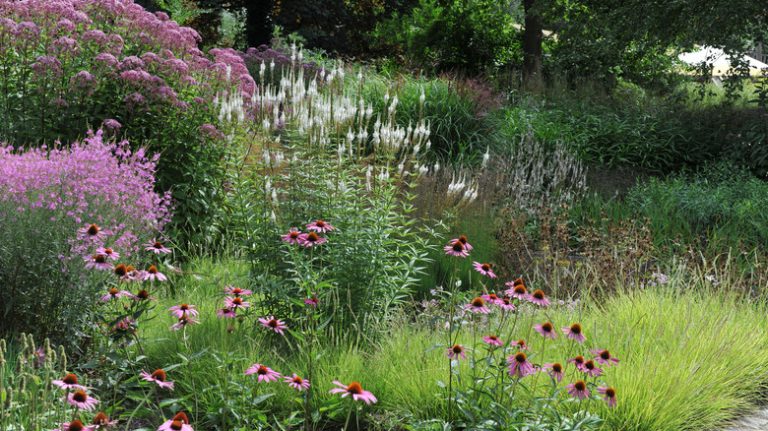Powdery mildew is a common fungal disease that affects a wide variety of plants, including fruit trees, roses, and squash plants. It causes a powdery white coating on the foliage, which can easily be identified. If left untreated, this fungal disease can spread and harm the plant, eventually causing it to weaken and die. Fortunately, there are several preventative and treatment measures that can be taken to manage powdery mildew and get rid of it.
One of the most effective and easily available remedies for powdery mildew is milk. Mix one part milk with nine parts water and spray it on the affected plants. The proteins in the milk create an environment that is not favorable for the growth of the fungus. Another popular treatment for powdery mildew is sulfur, which can be bought in powder or liquid form. Mix one tablespoon of sulfur with one gallon of water and spray it on the plants.
In addition to these home remedies, there are also several commercial products that can help in getting rid of powdery mildew. Funginex is a fungicide that is available online and in gardening stores. It can be used to treat powdery mildew on various plants and is especially effective in preventing the spread of the disease. Plantura is another product that has been proven to be helpful in managing powdery mildew. It is a preventative spray that can be used on plants that are at risk of being infected.
Preventing powdery mildew is the best approach to managing this fungal disease. There are several preventative measures that can be taken to reduce the risk of powdery mildew spreading to your plants. First, make sure to provide adequate spacing between plants to allow for air circulation. This can help prevent the conditions that favor the growth of powdery mildew. Additionally, water your plants in the morning so that the leaves have time to dry out during the day, as moisture on the leaves can promote the growth of the fungus. Finally, choose powdery mildew-resistant plant varieties when planting in areas where the disease is prevalent.
In conclusion, powdery mildew is a common fungal disease that can easily be identified by its powdery white coating on the foliage. The best way to get rid of powdery mildew is to follow preventative measures and treat the affected plants with home remedies or commercial products. With the right care and attention, you can manage powdery mildew and keep your plants healthy and disease-free.
Powdery Mildew
Powdery mildew is a very common fungal disease that can infest a wide variety of plants, including roses, fruit trees, and even squash. It is easily identifiable by the presence of a white or grayish powder-like substance on the leaves and other parts of the plant’s foliage. The fungal infection can spread quickly and cause significant damage if not treated promptly.
There are several methods for controlling and getting rid of powdery mildew. One popular treatment is using a mixture of milk and water. This treatment has been found to be effective in managing powdery mildew on roses and other susceptible plants. Simply mix one part milk with nine parts water and thoroughly spray the affected areas. The milk helps boost the plant’s immune system and prevents the spread of the disease.
Another treatment option is using sulfur-based fungicides. Sulfur is a natural element that has been used for centuries to control various diseases in plants. It works by inhibiting the growth of fungal spores and preventing them from spreading. Sulfur can be purchased at most garden shops and is typically applied by dusting the affected areas with a thin layer of the powder.
Some other practices that can help manage powdery mildew include ensuring good air circulation around plants, removing any infected leaves or plant parts, and avoiding overhead watering. Powdery mildew thrives in damp conditions, so keeping the plants dry can help prevent the disease from spreading.
| Treatment | Instructions |
|---|---|
| Milk and Water | Mix one part milk with nine parts water. Thoroughly spray the affected areas. |
| Sulfur-based fungicides | Dust the affected areas with a thin layer of sulfur powder. |
If you are unsure of how to identify powdery mildew or need help in controlling an infestation, it is always best to consult with a professional or seek advice online. Different plants may require different treatments, so it is important to get the right information for your specific situation.
In addition to treating powdery mildew, it is also important to take preventative measures to avoid future infestations. This includes practicing good garden hygiene, such as removing weeds and debris, and following proper plant care practices. Regularly inspecting your plants for signs of pests or diseases, and addressing any issues promptly, can help reduce the likelihood of a powdery mildew outbreak.
In conclusion, powdery mildew is a common fungal disease that can cause significant damage to plants if left untreated. However, with proper identification and treatment, it can be effectively managed and controlled. Whether using milk and water, sulfur-based fungicides, or other treatments, it is important to thoroughly and regularly inspect your plants and take appropriate action to keep them healthy and disease-free.
SYMPTOMS CAUSES
Powdery mildew is a common fungal disease that often affects plants in home gardens. It is characterized by a white, powdery substance that spreads across the leaves, stems, and other parts of the plant. Although it can affect a wide range of plants, it is most commonly found on roses, squash, and fruit trees.
The main cause of powdery mildew is the fungus itself, which thrives in warm, humid environments. The disease is more likely to occur when the weather is hot and dry, or when there is increased rainfall. However, it can also appear in cool, damp conditions.
While powdery mildew is a common problem, it can be prevented and controlled with proper gardening practices. Here are some common causes and symptoms of powdery mildew:
| Causes | Symptoms |
|---|---|
| High humidity | White, powdery substance on leaves and stems |
| Poor air circulation | Stunted growth and curling leaves |
| Overcrowded plants | Yellowing and browning of foliage |
| Wet foliage | Black spots and patches on leaves |
| Infected plant material | Leaves becoming distorted and deformed |
| Weak or stressed plants | Reduced fruit production |
If you’re experiencing powdery mildew in your garden, it’s important to take measures to control and manage the disease. This can include pruning away infected plant material, improving air circulation, and avoiding overhead watering. Additionally, you can use fungicides or homemade remedies, such as a mixture of sulfur and water, to treat the affected plants.
Prevention is also key in avoiding powdery mildew. Make sure to follow good gardening practices, such as spacing plants properly, removing weeds, and providing adequate sunlight. Regularly inspect your plants for early signs of powdery mildew, and take immediate action if you spot any symptoms. By implementing these proactive measures, you can keep your garden healthy and free from this common fungal disease.
CONTROL MEASURES
To control powdery mildew, it is important to take quick and effective measures. Although this fungal disease can be difficult to eliminate completely, there are steps you can take to manage and reduce its impact on your plants.
1. Remove and destroy infected plants: As soon as you notice powdery mildew symptoms on a plant, such as white powdery patches on leaves and shoots, it is vital to remove and destroy the infected parts. This will help prevent further spread of the disease to healthy plants.
2. Improve airflow and sunlight: Powdery mildew thrives in humid and shaded conditions. To create an unfavorable environment for the disease, prune your plants to increase airflow and sunlight penetration. This will help reduce the humidity and inhibit the growth of fungal spores.
3. Practice good garden hygiene: Keeping your garden clean and weed-free can go a long way in preventing powdery mildew and other fungal diseases. Remove fallen leaves and weeds that can harbor fungal spores, and promptly dispose of them in sealed bags or burn them to prevent further infections.
4. Use fungicidal treatments: Treating powdery mildew with fungicidal sprays can be effective in controlling the disease. There are various commercial fungicides available that specifically target powdery mildew. Follow the instructions provided on the product label and spray your plants regularly to prevent or treat the infection.
5. Natural and homemade remedies: If you prefer a more organic approach, you can make a homemade spray using a mixture of milk and water. Combine one part milk with nine parts water, and spray the mixture directly onto the affected plants. This milk spray is believed to boost the plant’s immune system and help control the spread of powdery mildew.
6. Plant resistant varieties: Some plant species are more susceptible to powdery mildew than others. When choosing plants for your garden, opt for varieties that have been bred to be resistant to this disease. These varieties will require less maintenance and are less likely to be affected by powdery mildew.
7. Consider biological control agents: There are also beneficial organisms, such as predatory insects and fungi, that can help control powdery mildew and other pests. You can introduce these natural enemies into your garden to help manage the infestation, but be sure to follow proper guidelines and only use approved biological control agents.
Remember, prevention is always better than cure. Regularly inspect your plants for signs of powdery mildew and take action at the first sign of an infestation. By following these control measures, you can effectively manage powdery mildew and protect your plants from the harmful effects of this fungal disease.
How to Get Rid of Powdery Mildew
Powdery mildew is a fungal disease that affects many plants, making them susceptible to other diseases and reducing their overall health and productivity. It appears as a white or gray powdery substance on the leaves, stems, and flowers of plants. If not treated properly, powdery mildew can spread and cause significant harm to your garden.
To get rid of powdery mildew, it’s important to follow proper prevention and treatment measures. Here are some steps you can take:
- Remove and destroy infected plant parts: If you notice any plants with powdery mildew symptoms, such as white powdery spots or patches, remove the infected leaves, stems, flowers, or fruits. It’s important to do this carefully to avoid spreading the disease to other plants.
- Improve air circulation: Powdery mildew thrives in humid environments with poor air circulation. Prune your plants to open up the foliage and allow better airflow. You can also try spacing your plants further apart to reduce the chances of powdery mildew spreading.
- Apply fungicides: Fungicides can help control powdery mildew, but it’s important to choose the right one for your specific plants. Look for fungicides labeled for powdery mildew control and follow the instructions carefully.
- Use natural remedies: Some natural remedies, such as a mixture of baking soda and water, or a solution made from horsetail herb, can help control powdery mildew. These remedies typically require direct contact with the fungus, so make sure to thoroughly coat the affected areas.
- Apply preventive measures: To prevent powdery mildew from occurring in the first place, practice good garden hygiene. Keep your plants healthy by providing proper sunlight, watering, and fertilizing. Avoid overhead watering, as it can create a humid environment that favors powdery mildew.
- Choose resistant plant varieties: Some plants are more resistant to powdery mildew than others. When selecting plants for your garden, look for varieties that are known to be powdery mildew resistant. This can help reduce the chances of getting infected in the first place.
By following these steps and being proactive in your garden care, you can effectively get rid of powdery mildew and prevent its spread. If you have tried multiple treatments and failed to control powdery mildew, consult a professional gardener or plant specialist for further assistance.




